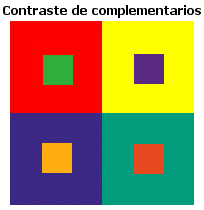[Es]Según la teoría de color, los colores primarios son el rojo, amarillo y el azul, estos 3 junto con el blanco y negro son básicos porque a partir de la mezcla de estos 5 puedes obtener cualquier otro color.
Esto es solamente cierto en parte puesto que la teoría del color se divide en 2 apartados:
Los colores primarios de la luz que forman el estándar RGB (red green blue, que como su nombre indica toma como primarios el rojo, verde y azul), el cual es definido por los colores que nuestro ojo puede captar en la luz que incide en ellos.
El segundo es el estándar CMY (cian, magenta y amarillo cadmio), son los primarios pigmentarios y son los que nos interesan a todos puesto que son los pigmentos básicos de las pinturas a partir de los cuales podemos componer el resto de colores.
para simplificar se utiliza una variante que es el modelo RYB (red, yellow, blue, rojo amarillo y azul).
[En]According color theory, primmary color are red, yellow and blue, those 3 plus black and white are the basics because with the mixture of those 5 you can get any other color.
That’s true only partially because there are 2 tendencies in color theory:
Light primary colors compose RGB standar (red, green and blue are the primary colors here). those are defined by the colors our eye can adquiere in light that incide on them.
Second one is CMY standar (cian, magenta and cadmio yellow), those are primary pigment colors and those are interesting for us as are the basic pigments of our paints from those we can mixture all other ones.
To make it easier we use a variant called RYB (red, yellow, blue)
RGB CMY RYB
[Es]Cuanta más proporción de primario tenga un color más saturado estará, mientras que cuanto más mezclado este y mas blanco o negro tenga estará más desaturado.
un color muy saturado tiene un color vivo e intenso, mientras que un color menos saturado parece más descolorido y gris. Sin saturación, un color se convierte en un tono de gris.
Esto es importante porque el ojo percibe antes los colores primarios y saturados, por tanto podemos utilizarlo para resaltar partes destacables de nuestras figuras.
[en]A color will be more saturated when it has more proportion of one primary pigment, in the oposite way, will be more desaturated as much mixed and/or more black and white it has.
A saturated color looks livelier than a desturated one that looks discolored, faded, more grey. Without saturation a color becomes a grey tone.
That’s very important because a saturated color is seen first by the eye so we can use this to improve important parts of the miniature.
[Es]Un buen ejercicio para comprender esto y comenzar a desbloquear la mente es escoger un color cualquiera de tu colección (que no sea un primario) y aplicar una gotita en una paleta. Después descartas ese bote y tratas de copiarlo utilizando otros colores de tu gama mediante mezclas.
A continuación subimos la dificultad: coges el color que más se aproxime al original de los que has utilizado (que no sea un primario) y lo descartas también, y con el resto de tu gama repites el proceso de clonar el original. tal vez tengas que obtener primero el color que has descartado de tu mezcla anterior.
y así sucesivamente hasta que puedas obtener cualquier color utilizando solamente rojo, amarillo, azul, blanco y negro. Evidentemente no es sencillo ni es el objetivo, la idea del ejercicio es desprendernos de la necesidad de usar colores específicos como “azul halcón de tormenta” (el nombre es inventado) y si no lo tenemos usar “azul con una pizca de verde amarillo y blanco”, esto que parece una tontería nos da muchísimas posibilidades nuevas.
[en]Good exercise to understand this and start to unlock our mind is to choose one of our colors in our collection (not a primary one) and put a dot on our palette. After that we discard that color and we must try to copy using mixes of our other colors.
Then we can improve the difficulty: Take your color that is closest to the original one and discart it too (not a primary one), and with the other ones try again to get the first original color you choose. Maybe you should get first the second discarted one.
So repeat until you can get any color using just red, blue, yellow, black and white. obvioulsy that’s not easy and it’s not the objetive, idea of the exercise is to become free of the need of using especific colors as “storm hawk blue” (name is from my own) and use instead if we haven’t “some blue with a little bit of green, yellow and white”. That sounds as a foolishness but gives to us lot of new possibilities
Te agradezco mucho que hayas leído el tutorial completo. Por favor si te ha gustado y quieres ayudarme a que Arsies Studio siga funcionando y publicando tutoriales, invítame a un café o ayudame a pagar el dominio web :)
Thank you so much for reading this tutorial. If you liked it and you want to help keeping Arsies Studio working and posting more tutorials, Invite me a coffe or help me to pay the web's domain :)
 Los colores secundarios son a su vez complementarios del otro primario que no se usa en la mezcla, es decir, el verde (mezcla de azul y amarillo) es complementario del rojo, Están situados al lado opuesto de la rueda de color.
Los colores secundarios son a su vez complementarios del otro primario que no se usa en la mezcla, es decir, el verde (mezcla de azul y amarillo) es complementario del rojo, Están situados al lado opuesto de la rueda de color. 











































